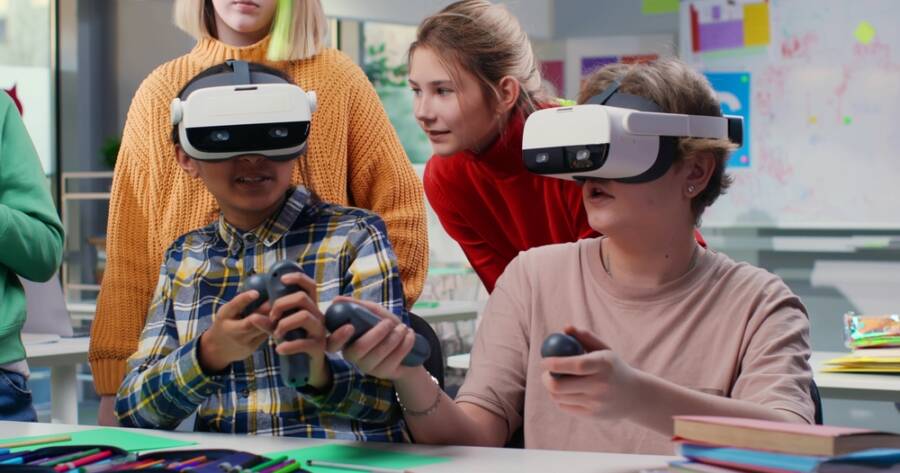Virtual reality development significantly boosts user engagement in gaming and training applications. Its growing adoption by companies for remote collaboration and immersive experiences is transforming education through interactive learning environments.
What Is Virtual Reality Development?
Virtual reality development refers to the process of creating immersive digital environments that simulate real-world experiences. This technology utilizes computer-generated graphics, sound, and other sensory inputs to transport users into a virtual space where they can interact with the environment and objects within it. The development process involves various disciplines, including software engineering, 3D modeling, and user experience design. Recent advancements in hardware, such as more powerful graphics processing units and affordable headsets, have made VR more accessible and appealing to developers and consumers alike. The applications of virtual reality development span numerous industries, including gaming, healthcare, real estate, and education. In gaming, developers create engaging experiences that allow players to explore fantastical worlds or participate in realistic simulations.1 In healthcare, VR is being used for training medical professionals and providing therapeutic experiences for patients. The versatility of VR technology continues to expand, with ongoing research and development aimed at enhancing the realism and interactivity of virtual environments. As the field of virtual reality development evolves, it is essential to consider the ethical implications and potential challenges associated with its use. Issues such as user privacy, data security, and the psychological effects of prolonged VR exposure are critical areas of concern. Developers and researchers are actively working to address these challenges, ensuring that VR technology can be harnessed responsibly and effectively for various applications.
How Virtual Reality Development Boosts Engagement and Collaboration
Virtual reality (VR) has significantly transformed the gaming industry by offering a new level of immersion and interaction, changing how players experience games. Unlike traditional gaming, where players view the action on a screen, VR places players directly inside the game world, allowing them to interact with their environment in a realistic, engaging, and often physically interactive way. This sense of presence is achieved through technologies such as 360-degree visuals, motion tracking, and spatial audio, which make the virtual environment feel real. This technological shift has deeply impacted game design, pushing developers to create experiences that leverage VR’s unique capabilities, such as immersive storytelling and interactive environments. It has also enhanced player experience by offering more intuitive controls and realistic scenarios, making games more engaging and emotionally compelling. Additionally, VR has reshaped the social aspects of gaming, enabling players to connect in shared virtual spaces and interact with others in ways that feel more personal and authentic, further broadening the appeal and reach of gaming.
Benefits of VR in Education: Interactive Learning Environments
Virtual reality is revolutionizing education by providing interactive learning environments that engage students in ways traditional methods cannot. By immersing learners in virtual settings, educators can create experiences that enhance understanding and retention of complex concepts. For instance, students can explore historical sites, conduct virtual science experiments, or even travel through the human body, all from the comfort of their classrooms. This level of interactivity not only makes learning more enjoyable but also caters to various learning styles, accommodating visual, auditory, and kinesthetic learners. Recent studies have highlighted the positive impact of VR on student performance and motivation. Research indicates that students who engage with VR content demonstrate improved problem-solving skills and critical thinking abilities. Furthermore, the ability to visualize abstract concepts in a tangible way can lead to deeper comprehension and a greater interest in the subject matter.2 As educational institutions increasingly recognize the potential of VR, many are investing in the technology to enhance their curricula and provide students with unique learning opportunities. In addition to enhancing engagement, VR can also promote inclusivity in education. Students with disabilities or learning challenges may benefit from tailored VR experiences that address their specific needs. For example, VR can provide alternative methods for students to participate in activities that may be difficult in a traditional classroom setting. By fostering an inclusive environment, VR technology can help ensure that all students have access to quality education and the opportunity to succeed.
Learning More About Virtual Reality Development
For those interested in exploring the world of virtual reality development further, numerous resources are available. Engaging with academic journals, industry reports, and reputable news sources can provide valuable insights into the latest trends and advancements in VR technology. Additionally, online courses and workshops can offer hands-on experience in VR development, equipping individuals with the skills needed to create immersive experiences. As the field continues to evolve, staying informed about new developments will be crucial for anyone looking to harness the power of virtual reality in various applications.
